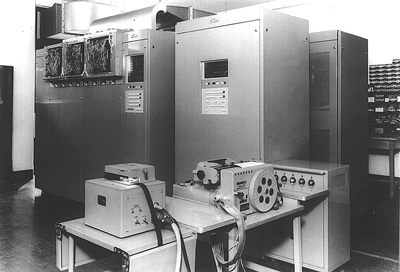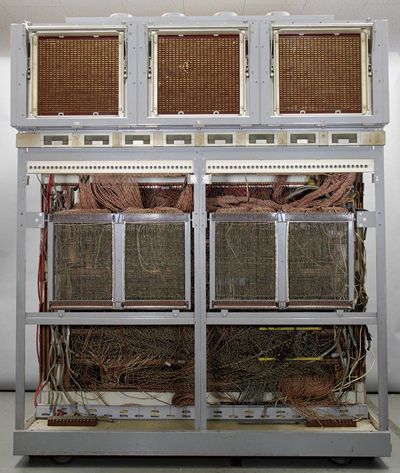

- Home >
- Artifacts of IP Heritage >
- 2013 >
- KT-Pilot
KT-Pilot


| Manufactured in | 1961 |
|---|---|
| Manufactured by | Kyoto University and Tokyo Shibaura Electric Co., Ltd. (Now, Toshiba Corporation) |
| Owner | Toshiba Corporation |
| Location of historical materials | Toshiba Science Museum 2F Lazona Kawasaki Toshiba Bldg., 72-34, Horikawa-Cho, Saiwai-Ku, Kawasaki 212-8585, Japan |
| Visitor information | Not open to the public |
| Contact | Toshiba Science Museum Tel.+81-44-549-2200 https://toshiba-mirai-kagakukan.jp/en/ |
KT-Pilot was developed in 1961 through joint research on an "electronic computer employing a new system," by Kyoto University and Tokyo Shibaura Electric Co., Ltd. (Now, Toshiba Corporation), and was Japan's first computer using a true microprogram system.
The calculator made use of the parallel asynchronous high-speed calculation method, and incorporated a high-speed basic circuit utilizing silicon mesa transistors newly developed by Toshiba. It was the first domestic calculator to use thin film memory. KT-Pilot uniquely used a diode-based fixed memory device for microprogramming, and a patch board and phototransistor for the variable memory. It performed calculations much faster (one order of magnitude faster, in fact) than others at the time. Calculation time of, for example, circular constant π was dramatically reduced by adding a calculation micro instruction to the variable microprogram.
These results were announced jointly by Hiroshi Hagiwara (Kyoto University), Kohei Amo, Sigenori Matsushita and Hisashi Yamanouchi (Tokyo Shibaura Electric Co., Ltd.) at the IFIP held in Munich in August 1962.It was before the announcement of IBM System/360, and the KT-Pilot was highly praised as the fastest calculator in the world. Toshiba has developed the TOSBAC-3400 computer after the KT-Pilot.
The calculator made use of the parallel asynchronous high-speed calculation method, and incorporated a high-speed basic circuit utilizing silicon mesa transistors newly developed by Toshiba. It was the first domestic calculator to use thin film memory. KT-Pilot uniquely used a diode-based fixed memory device for microprogramming, and a patch board and phototransistor for the variable memory. It performed calculations much faster (one order of magnitude faster, in fact) than others at the time. Calculation time of, for example, circular constant π was dramatically reduced by adding a calculation micro instruction to the variable microprogram.
These results were announced jointly by Hiroshi Hagiwara (Kyoto University), Kohei Amo, Sigenori Matsushita and Hisashi Yamanouchi (Tokyo Shibaura Electric Co., Ltd.) at the IFIP held in Munich in August 1962.It was before the announcement of IBM System/360, and the KT-Pilot was highly praised as the fastest calculator in the world. Toshiba has developed the TOSBAC-3400 computer after the KT-Pilot.
